- ExhibitionsTOTO GALLERY·MA
- Current Exhibition
- Upcoming Exhibitions
- Past Exhibitions
- ExhibitionsExternal Locations
- Current Exhibitions
- Upcoming Exhibitions
- Past Exhibitions
- Lectures
- Upcoming Lectures
- Past Lectures
- Visitor Information
- Directions
- Gallery Infomation
- Museum Shop
- Bookshop TOTO
Cultural Activities
TOTO GALLERY·MA
TOTO Publishing
Bookshop TOTO

Message from the Director
Ahead of the en Exhibition in Japan
The Japan Pavilion for the 15th International Architecture Exhibition of the Venice Biennale represented an attempt to revisit the various ties, relations, and connections of society—the “art of nexus”—that have been lost to modernism and to reconsider their value within an Asian context. Themed “en” ( 縁, “karmic connection”), it presented the architectural work of 12 exhibitors through three intertwined and convergent sections titled “The en of People”, “The en of Things”, and “The en of Locality”.
When we carefully read into the work of the 12 exhibitors, we can understand them as “architectural” solutions to social problems identified by each of the architects. Each work embodies many naïve yet sensitive ideas, and we can recognize in them an intention to open up the future from within Japan’s present circumstances.
The works do not by any means express powerful messages directed at a grand civil society. Their goal is neither to achieve some great common ideal in the way modernist architecture embraced purification, abstraction, and rationality nor to instigate a revolution against the whole of society. Each work responds to real, concrete subjects, and they thoughtfully address the task of improving people’s quality of life. They present themselves as flexibly made bricolages that answer to problems of everyday life in ways best described as improvisational and pragmatic rather than logical.
The homecoming exhibition will be based on the en—art of nexus exhibition shown at the Japan Pavilion in the Venice Biennale. The theme cannot be precisely conveyed without its original context, however. So, while preserving the original messiness, density, and fetishistic items that evoked the living spaces of Asia and, by extension, the urban and interior spaces of Japan, we will add exhibits to show what pointers for their future creative activities each exhibitor gained through experiencing the Biennale and display the latest work of these front-running architects who are finding ways to survive under challenging circumstances.
The Japan Pavilion for the 15th International Architecture Exhibition of the Venice Biennale represented an attempt to revisit the various ties, relations, and connections of society—the “art of nexus”—that have been lost to modernism and to reconsider their value within an Asian context. Themed “en” ( 縁, “karmic connection”), it presented the architectural work of 12 exhibitors through three intertwined and convergent sections titled “The en of People”, “The en of Things”, and “The en of Locality”.
When we carefully read into the work of the 12 exhibitors, we can understand them as “architectural” solutions to social problems identified by each of the architects. Each work embodies many naïve yet sensitive ideas, and we can recognize in them an intention to open up the future from within Japan’s present circumstances.
The works do not by any means express powerful messages directed at a grand civil society. Their goal is neither to achieve some great common ideal in the way modernist architecture embraced purification, abstraction, and rationality nor to instigate a revolution against the whole of society. Each work responds to real, concrete subjects, and they thoughtfully address the task of improving people’s quality of life. They present themselves as flexibly made bricolages that answer to problems of everyday life in ways best described as improvisational and pragmatic rather than logical.
The homecoming exhibition will be based on the en—art of nexus exhibition shown at the Japan Pavilion in the Venice Biennale. The theme cannot be precisely conveyed without its original context, however. So, while preserving the original messiness, density, and fetishistic items that evoked the living spaces of Asia and, by extension, the urban and interior spaces of Japan, we will add exhibits to show what pointers for their future creative activities each exhibitor gained through experiencing the Biennale and display the latest work of these front-running architects who are finding ways to survive under challenging circumstances.
Yoshiyuki Yamana, Exhibition Director
Director
Yoshiyuki Yamana
Professor, Department of Architecture,Tokyo University of ScienceFrench-registered Architect (DPLG),Doctorate in Art HistorySpecialties: Architectural Design,Architectural History, and Archival ScienceSenior Curator, the National Archive ofModern ArchitectureVisiting Researcher, the National Museum of Western ArtAdvisory Board member, DOCOMOMO InternationalVice-Chairman, Docomomo JapanCommittee member, ICOMOS JapanBorn in 1966 in Tokyo, Yoshiyuki Yamana graduatedfrom the Department of Architecture at Tokyo Universityof Science (TUS) in 1990, and worked at Koyama. Receivinga scholarship for foreign students from the Frenchgovernment, he studied at Ecole Nationale Supérieured'Architecture de Paris-Belleville and obtained a degreein architecture (DPLG). He then obtained a doctoraldegree from the Université Paris 1 Panthéon-Sorbonne.After being trained at the Henri Ciriani Atelier, as partof the Agency for Cultural Affairs’ overseas training programfor artists, he worked as a contract lecturer at theEcole d'architecture, Nantes, the Archives de France, andthe Institut français d’architecture. He began working atthe Department of Architecture of TUS in 2002.
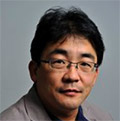
Yoshiyuki Yamana
Venue Design
teco
Chie Konno / teco
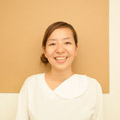
Chie Konno
Chie Konno was born in 1981 in Kanagawa Prefecture. After graduating from the Department of Architecture at Tokyo Institute of Technology in 2005, she attended atthe Swiss Federal Institute of Technology as a scholarship student from 2005 to 2006. In 2011, she earned a doctorate in engineering from Tokyo Institute of Technology and started working at Kobe Design University as a graduate assistant. She also established KONNO in the same year. She has worked as an assistant professor at Nippon Institute of Technology from 2013 to 2016, and established teco in 2015.
Rie Allison / teco
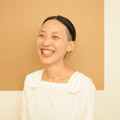
Rie Allison
Rie Allison was born in 1982 in Miyazaki Prefecture. After graduating from the Department of Architecture at Tokyo Institute of Technology in 2005, she completed a doctoral program without degree at the same university in 2010. She has worked at Root A from 2010 to 2014 and at Atelier and I Kazunari Sakamoto Architectural Laboratory from 2014 to 2015. She established teco in 2015.
Exhibitors
Mio Tsuneyama / mnm
Mio Tsuneyama / mnm
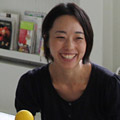
Mio Tsuneyama
Born in in 1983 Kanagawa Prefecture, Mio Tsuneyama graduated from Tokyo University of Science in 2005. She did an internship at Bonhôte Zapata Architectes Genève, Switzerland from 2005 to 2006. From 2006 to 2008, she was given Swiss International Student Bourse and completed a graduate course in architecture at École Polytechnique Fédéral de Lausanne, Switzerland in 2008. After working at HHF Architects Basel, Switzerland, she established Studio mnm in 2012. She worked as an assistant at TUS from 2013 and became an assistant professor in 2015. She also started teaching at Musashino Art University as a part-time lecturer in 2014.
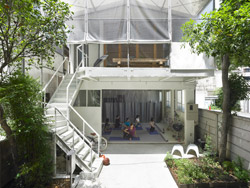
House for Seven People (Tokyo, 2013)
Design: Mio Tsuneyama / mnm ©Sadao Hotta

House for Seven People (Tokyo, 2013)
Design: Mio Tsuneyama / mnm ©Sadao Hotta
Osamu Nishida+Erika Nakagawa
Osamu Nishida / Osamu Nishida+Erika Nakagawa
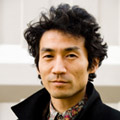
Osamu Nishida
Osamu Nishida was born in 1976 in Kanagawa Prefecture. He graduated from Yokohama National University in 1999. In 2002, he established the architecture firm Speed Studio. From 2002 to 2007 he worked as a graduate assistant at Tokyo Metropolitan University Graduate School, and he established ondesign in 2004. He worked as an assistant at Yokohama Graduate Schoolof Architecture (Y-GSA) from 2005 to 2009 and works as a parttime lecturer at the University of Tokyo and Tokyo University of Science from 2013 to 2016.
Erika Nakagawa / Osamu Nishida+Erika Nakagawa
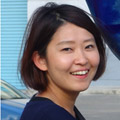
Erika Nakagawa
Erika Nakagawa was born in 1983 in Tokyo. She graduated from Yokohama National University in 2005 and obtained her master's degree from Graduate School of Fine Arts, Tokyo University of the Arts in 2007. She worked at ondesign between 2007 and 2014. In 2014, she established erika nakagawa office. She worked as part-time lecturer at Yokohama National University in 2012. She currently works as a part-time lecturer at Tokyo University of the Arts, Hosei University, and Shibaura Institute of Technology.
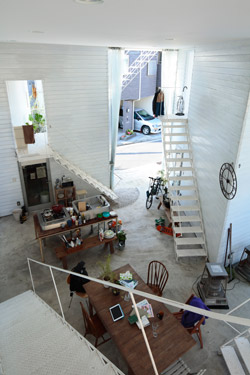
Yokohama Apartments (Yokohama, 2009)
Design: Osamu Nishida+Erika Nakagawa ©Koichi Torimura

Yokohama Apartments (Yokohama, 2009)
Design: Osamu Nishida+Erika Nakagawa ©Koichi Torimura
Naruse Inokuma Architects
Jun Inokuma / Naruse Inokuma Architects
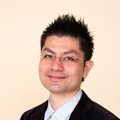
Jun Inokuma
Born in 1977 in Kanagawa Prefecture, Jun Inokuma earned a master's degree in architecture from the University of Tokyo in 2004. He worked at Chiba Manabu Architects until 2006, and established Naruse Inokuma Architects with Yuri Naruse in 2007. He became an assistant professor at Tokyo Metropolitan University in 2008.
Yuri Naruse / Naruse Inokuma Architects

Yuri Naruse
Yuri Naruse was born in 1979 in Aichi Prefecture. In 2007, she completed her doctoral program in architecture at the University of Tokyo and established Naruse Inokuma Architects with Jun Inokuma. She became a project research associate at the graduate school of the University of Tokyo in 2009 and worked as a research associate at the same school from 2010 to 2017.
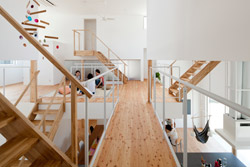
LT Josai (Nagoya, 2013)
Design: Naruse Inokuma Architects ©Masao Nishikawa

LT Josai (Nagoya, 2013)
Design: Naruse Inokuma Architects ©Masao Nishikawa
Naka Architects’ Studio
Toshiharu Naka / Naka Architects’ Studio
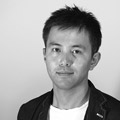
Toshiharu Naka
Toshiharu Naka was born in 1976 in Kyoto Prefecture. After graduating from the Department of Architecture at the University of Tokyo in 1999, he earned a master's degree in architecture from the University of Tokyo in 2001. He worked at Riken Yamamoto & Field Shop from 2001 to 2008, and established Naka Architects' Studio in 2009. Then he worked as a design assistant at Y-GSA from 2009 to 2011. He also works as a part-time lecturer at Yokohama National University, Meiji University, Kanto Gakuin University, Tokyo University of Science, Hosei University and Tokyo Metropolitan University.
Yuri Uno / Naka Architects’ Studio
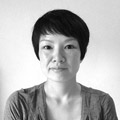
Yuri Uno
Yuri Uno was born in 1976 in Tokyo. After graduating from the Department of Architecture at the University of Tokyo in 1999, she earned a master's degree in architecture from the University of Tokyo in 2001. She worked at Nihon Sekkei from 2001 to 2013 and joined Naka Architects' Studio as a partner in 2013.

Apartments with a Small Restaurant
Design: Naka Architects’ Studio

Apartments with a Small Restaurant
Design: Naka Architects’ Studio
Nousaku Architects
Fuminori Nousaku / Nousaku Architects
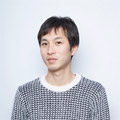
Fuminori Nousaku
Born in 1982 in Toyama Prefecture, Fuminori Nousaku graduated from the Department of Architectureand Building Engineering at the Tokyo Institute of Technology in 2005. He then earned a master's degree from the same institute in 2007. After working at Njiric+Arhitekti in 2008, he established Fuminori Nousaku Architects in 2010 and obtained a doctorate in architecture from the Tokyo Institute of Technology in 2012. In the same year, he became an assistant professor at the same institute.
Junpei Nousaku / Nousaku Architects
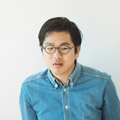
Junpei Nousaku
Junpei Nousaku was born in 1983 in Toyama Prefecture. He graduated from the Department of Architecture at the Musashi Institute of Technology (now Tokyo City University) in 2006. After working at Go Hasegawa & Associates from 2006 to 2010, he established Junpei Nousaku Architects in 2010.
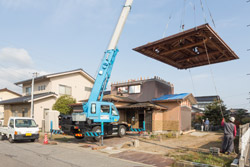
Guest House in Takaoka (Toyama, 2016)
Design: Nousaku Architects ©Jumpei Suzuki

Guest House in Takaoka (Toyama, 2016)
Design: Nousaku Architects ©Jumpei Suzuki
miCo.
Mizuki Imamura / miCo.
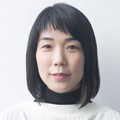
Mizuki Imamura
Mizuki Imamura was born in 1975 in Kanagawa Prefectureand graduated from the Department of Architectureat Meiji University in 1999. After working at Kazuyo Sejima & Associates from 2001 to 2008, she established miCo. in 2008. She currently works as a part-time lecturer at Joshibi Universityof Art and Design, Meiji University, Tokyo University of Science, and Musashino Art University.
Isao Shinohara / miCo.
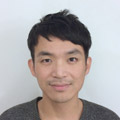
Isao Shinohara
Isao Shinohara was born in 1977 in Aichi Prefecture. He obtained his master's degree from the Graduate School of Media and Governance of Keio University in 2003. While working at SANAA from 2003 to 2013, he established miCo. in 2008. He currently works as a part-time lecturer at Joshibi University of Art and Design, Tokyo University of Science, and Showa Women's University.
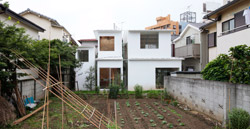
House at Komazawa Park (Tokyo, 2011)
Design: Mizuki Imamura + Isao Shinohara / miCo. ©Koichi Torimura

House at Komazawa Park (Tokyo, 2011)
Design: Mizuki Imamura + Isao Shinohara / miCo. ©Koichi Torimura
Levi Architecture
Jun Nakagawa / Levi Architecture
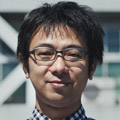
Jun Nakagawa
Jun Nakagawa was born in 1976 in Kanagawa Prefecture. After graduating from the Department of Architecture at Waseda University in 2003, he worked at the Kazuhiko Namba + Kai Workshop until 2006. He established Levi Architecture in 2006 and became a researcher at Research Institute for Science and Engineering Waseda University in 2013. In the following year, he joined the Shin-ichi Tanabe Laboratory at Waseda University. He currently works as a part-time lecturer at Musashino Art University and Chiba Institute of Technology.
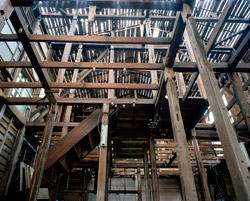
15A House (Tokyo, ongoing)
Design: Levi Architecture

15A House (Tokyo, ongoing)
Design: Levi Architecture
Shingo Masuda+Katsuhisa Otsubo Architects
Shingo Masuda / Shingo Masuda+Katsuhisa Otsubo Architects
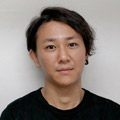
Shingo Masuda
Shingo Masuda was born in 1982 in Tokyo and graduated from Musashino Art University in 2007. He established Shingo Masuda+Katsuhisa Otsubo Architects with Katsuhisa Otsubo in 2007.
Katsuhisa Otsubo / Shingo Masuda+Katsuhisa Otsubo Architects
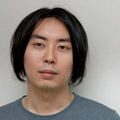
Katsuhisa Otsubo
Born in 1983 in Saitama Prefecture, Katsuhisa Otsubograduated from Tokyo University of the Arts in 2007. Heestablished Shingo Masuda+Katsuhisa Otsubo Architectswith Shingo Masuda in 2007.
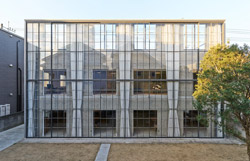
Boundary Window (Chiba, 2014)
Design: Shingo Masuda+Katsuhisa Otsubo Architects

Boundary Window (Chiba, 2014)
Design: Shingo Masuda+Katsuhisa Otsubo Architects
403architecture[dajiba]
Toru Yada / 403architecture[dajiba]
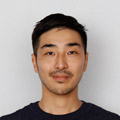
Toru Yada
Toru Yada was born in 1985 in Oita Prefecture. Aftergraduating from the Department of Architecture and Building Science at Yokohama National University in 2008, he obtained a master's degree from momoyo kaijima lab. of University of Tsukuba in 2011. He established 403architecture [dajiba] in 2011.
Takuma Tsuji / 403architecture[dajiba]

Takuma Tsuji
Takuma Tsuji was born in 1986 in Shizuoka Prefecture. After graduating from the Department of Architecture and Building Science at Yokohama National University in 2008, he obtained a master's degree from Yokohama Graduate School of Architecture in 2010. He then worked at Urban Nouveau* in 2010. In 2011, he started the Untenor media project and established 403architecture [dajiba]. He currently works as a part-time lecturer at University of Shiga Prefecture, Osaka City University and Musashino Art University.
Takeshi Hashimoto / 403architecture[dajiba]
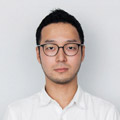
Takeshi Hashimoto
Born in 1984 in Hyogo Prefecture, Takeshi Hashimoto graduated from the architecture department at National Institute of Technology, Akashi College in 2005. After graduated from t the Department of Architecture and Building Science at Yokohama National University in 2008, he obtained a master's degree from Yokohama Graduate School of Architecture in 2010. In 2011, he established 403architecture [dajiba]. He currently works as a part-time lecturer at Meijo University.
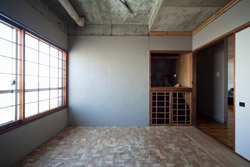
The Floor of Atsumi (Hamamatsu, 2011)
Design: 403architecture [dajiba] ©kentahasegawa

The Floor of Atsumi (Hamamatsu, 2011)
Design: 403architecture [dajiba] ©kentahasegawa
Koji Aoki Architects
Koji Aoki / Koji Aoki Architects

Koji Aoki
Koi Aoki was born in 1976 in Hokkaido. After graduating from the Department of Architecture at Hokkai Gakuen University in 2001, he earned a master's degree in architecture from Muroran Institute of Technology in 2003. He worked at Sou Fujimoto Architects from 2003 to 2011, and established Koji Aoki Architects in 2011. He worked as a part-time lecturer at Tokyo University of Science from 2013 to 2015. He also works as a part-time lecturer at Musashino Art University, Tokyo Zokei University, The University of Tokyo and Maebashi Institute of Technology.
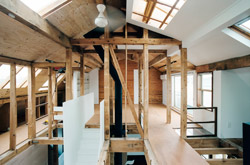
House in Chofu (Tokyo, 2014)
Design: Koji Aoki Architects

House in Chofu (Tokyo, 2014)
Design: Koji Aoki Architects
BUS
Satoru Ito / BUS
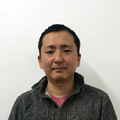
Satoru Ito
Satoru Ito was bornin 1976 in Tokyo.After graduatingfrom the Department of Engineering at Yokohama National University in 2000, he earned his master's degree in 2002. He worked at aat+Makoto Yokomizo Architects from 2002 to 2006 and then established Satoru Ito Architects and Associates in 2007. He currently works as an associate professor at Toyo University.
Kosuke Bando / BUS
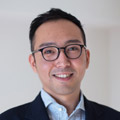
Kosuke Bando
Kosuke Bando was born in 1979 in Tokushima Prefecture. After graduating from the Department of Architecture at Tokyo University of the Arts in 2002, he worked at Schemata Architecture until 2004. In 2008, he obtained his master's degree from Harvard University Graduate School of Design. Then he worked at Architects Teehouse in 2009 and established Kosuke Bando Architects in 2010. In 2010, he also established BUS. He worked as a teaching assistant at Tokyo University of the Arts from 2010 to 2013, and at aat+Makoto Yokomizo Architects in 2013. He currently works at Kyoto City University of Arts as a lecturer.
Issei Suma / BUS
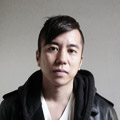
Issei Suma
Issei Suma was born in 1976 in Tokyo. After graduating from the Faculty of Environment and Information Studies at Keio University in 1999, he obtained hismaster's degree from Columbia University in 2002. He worked at the Rockwell Group from 2004 to 2007 and at Voorsanger Architects from 2007 to 2010. He established SUMA in 2011.

Projects in Kamiyama ENGAWA office (Tokushima, 2013)
Design: BUS

Projects in Kamiyama ENGAWA office (Tokushima, 2013)
Design: BUS
dot architects
Toshikatsu Ienari / dot architects
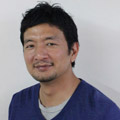
Toshikatsu Ienari
Toshikatsu Ienari was born in 1974 in Hyogo Prefecture. He graduated from the Faculty of Law at Kansai University in 1998 and from the Osaka College of Technology in 2000. In 2004, he established dot architects. He currently works as an associate professor at Kyoto University of Art and Design, and a part-time lecturer at Osaka College of Technology.
Takeshi Shakushiro / dot architects
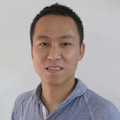
Takeshi Shakushiro
Born in 1974 in Hyogo Prefecture, Takeshi Shakushiro graduated from the Department of Environmental Designat Kobe Design University in 1997. He worked at Rikuo Kitamura + Zoom Atelier, and Katsuhiro Miyamoto & Associates before establishing dot architects in 2004. He currently works as a specially appointed lecturer at Osaka College of Technology and part-time lecturer at Kobe Design University.
Wataru Doi / dot architects
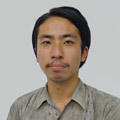
Wataru Doi
Wataru Doi was born in 1987 in Kanagawa Prefecture and earned a master’s degree from the Graduate School of Media and Governance of Keio University in 2013. After working at Studio Mumbai Architects, he Joined dot architects in 2014.
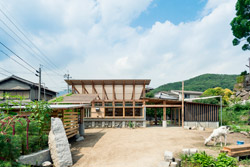
Umaki Camp (Shodoshima, 2013)
Design: dot architects ©Yoshiro Masuda

Umaki Camp (Shodoshima, 2013)
Design: dot architects ©Yoshiro Masuda
Copyright © TOTO LTD. All Rights Reserved.







